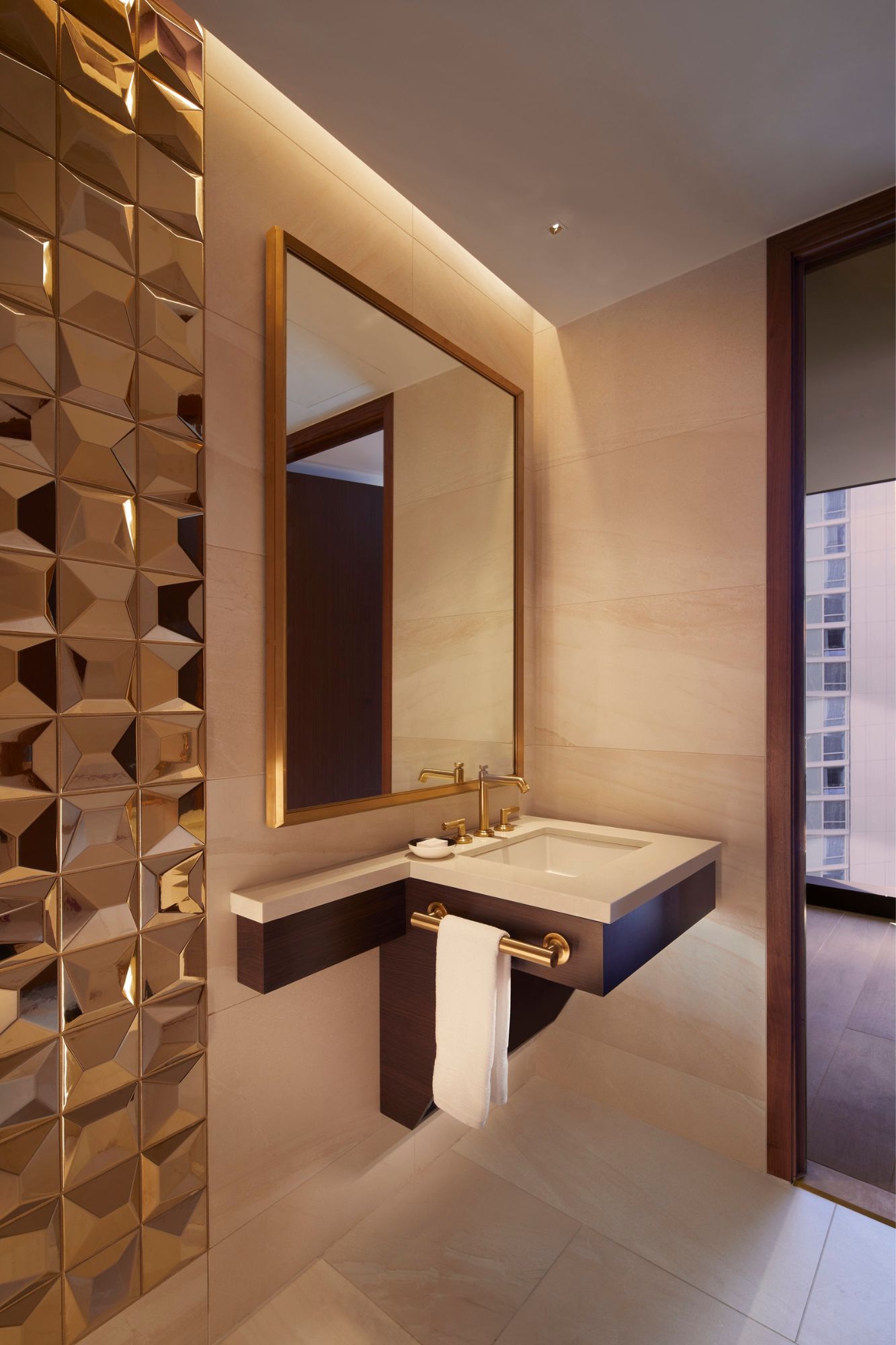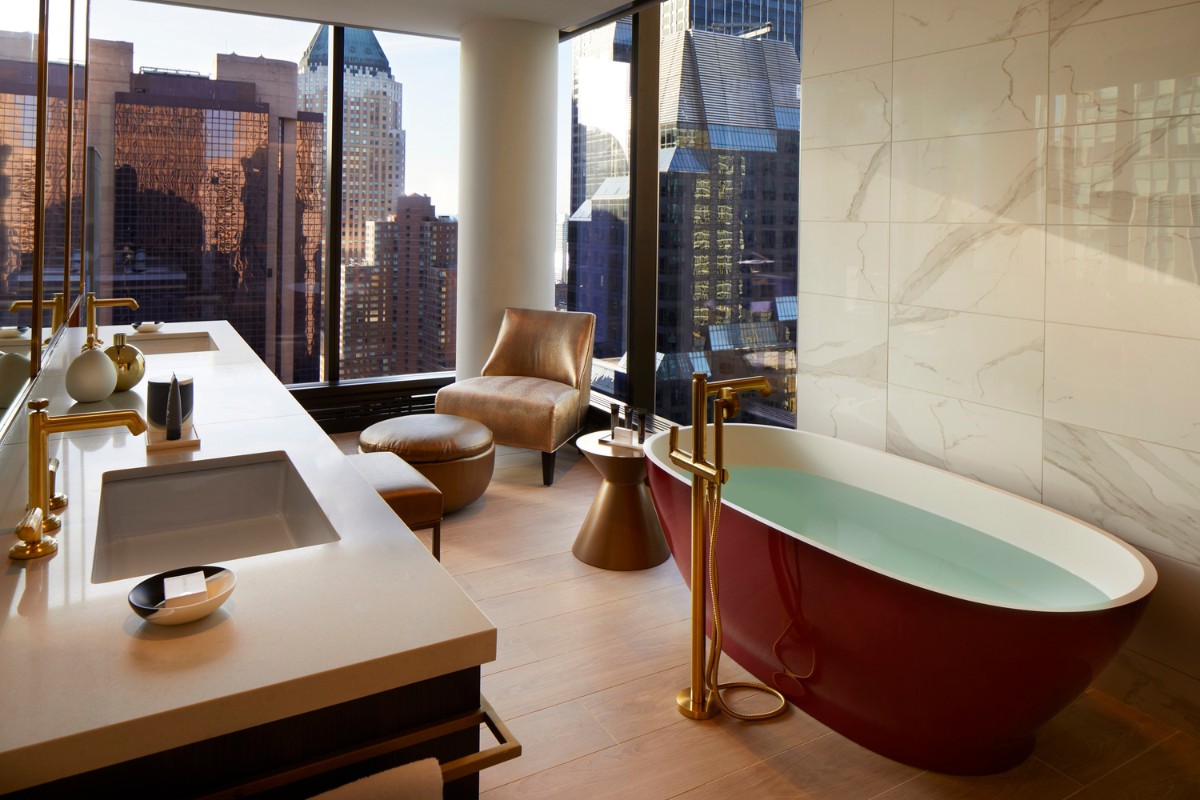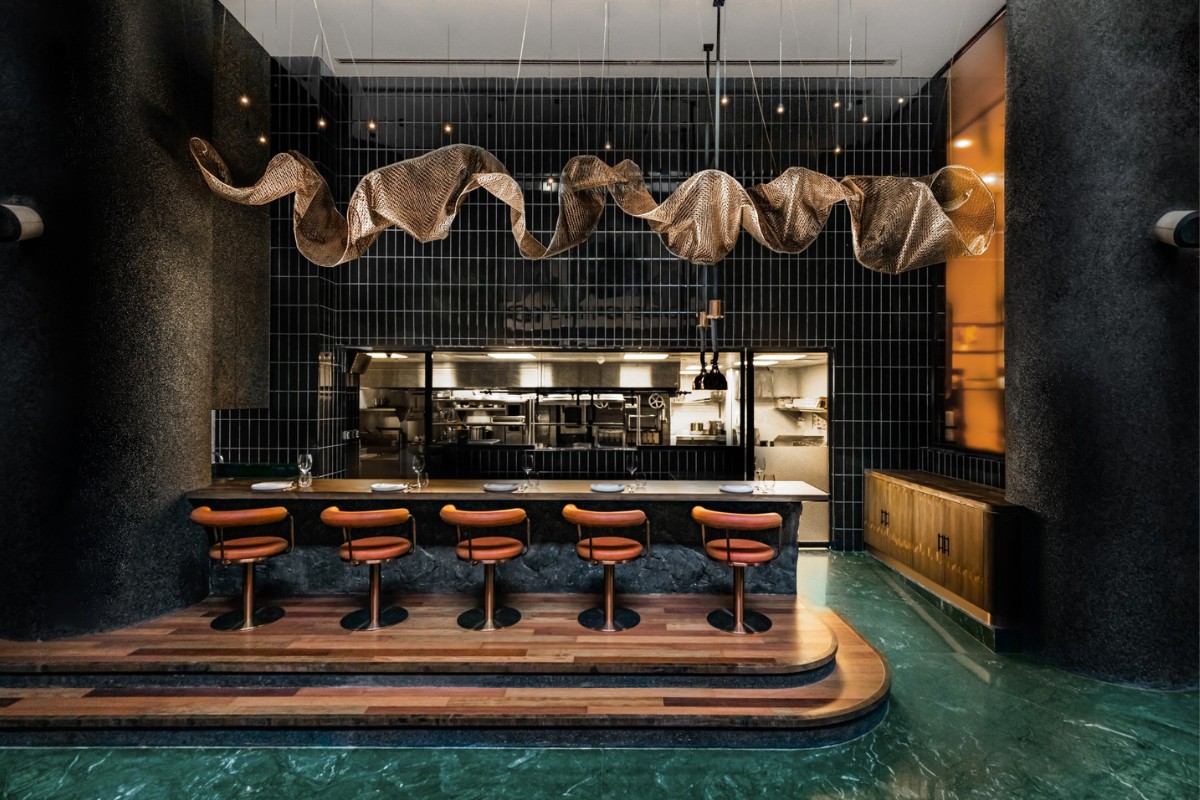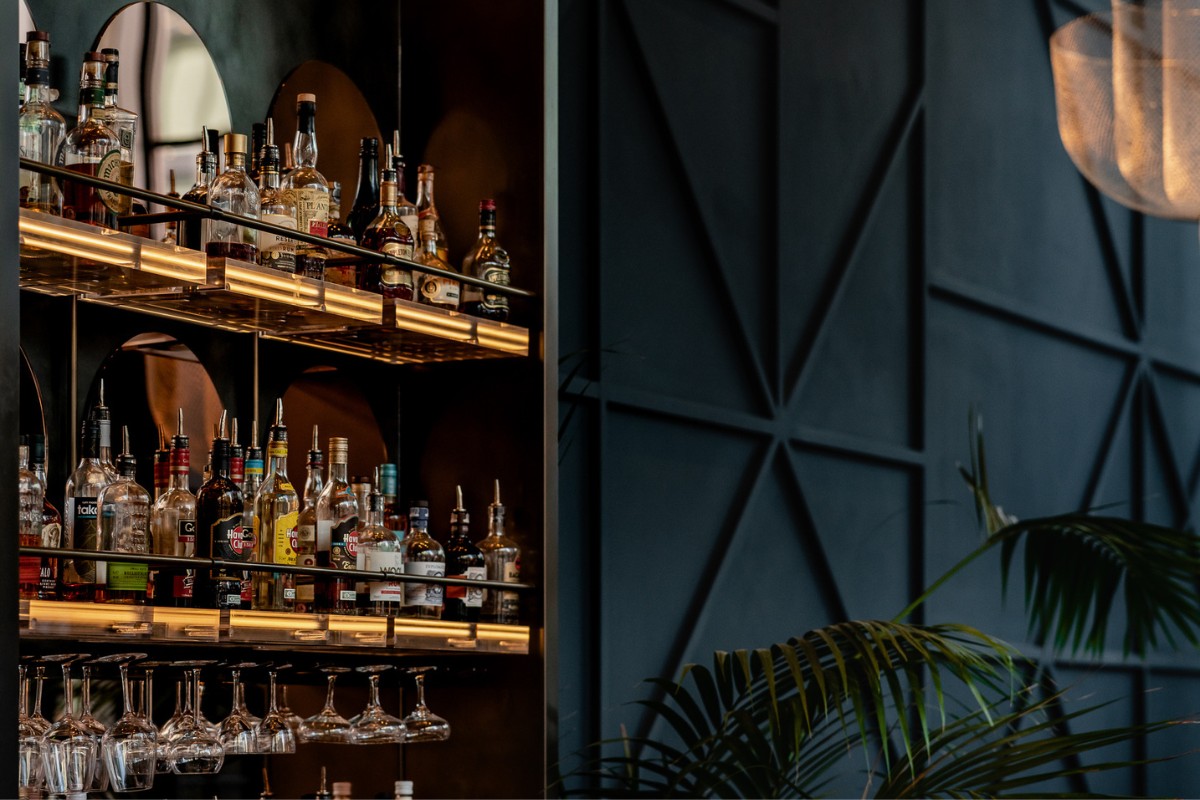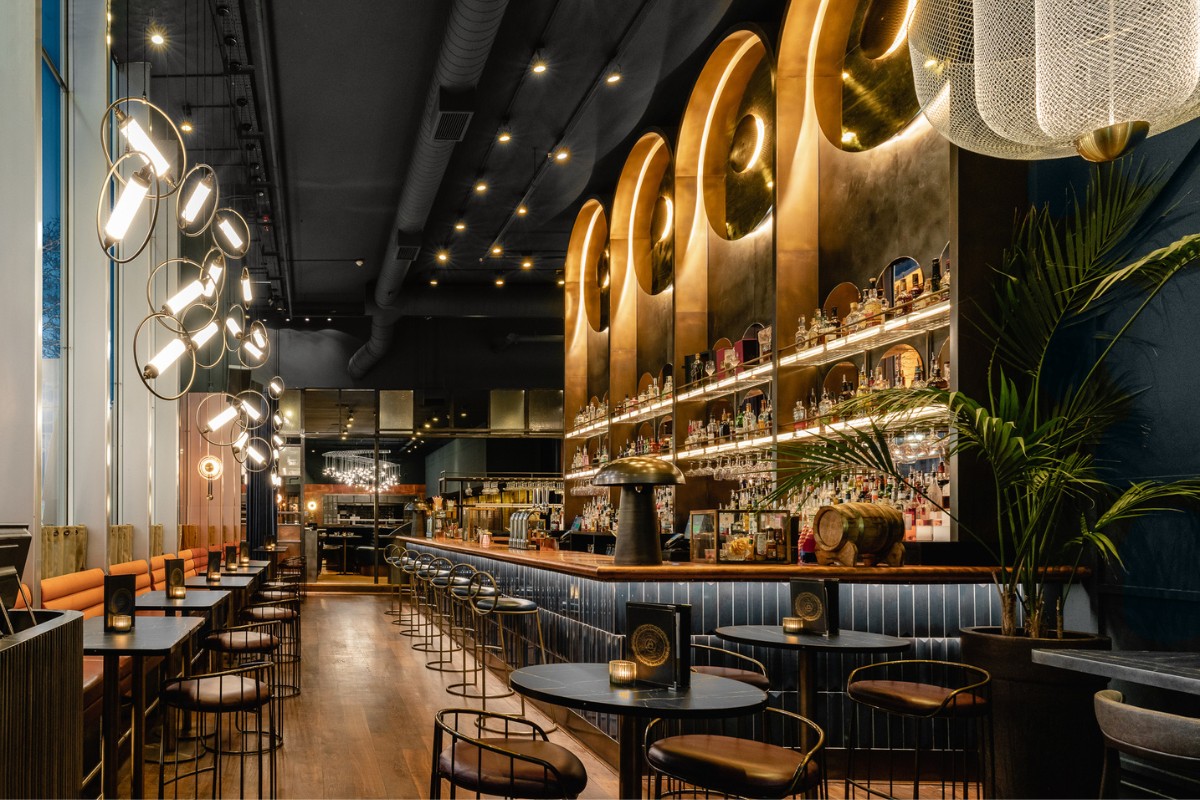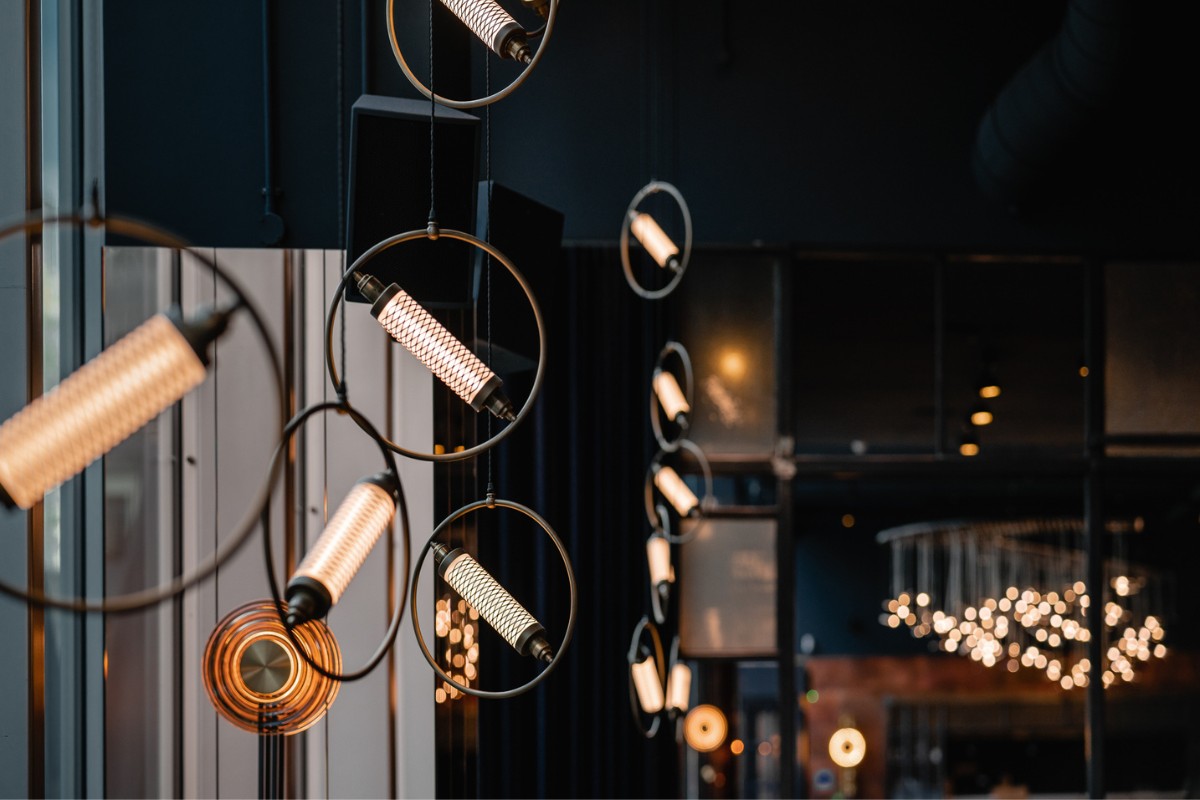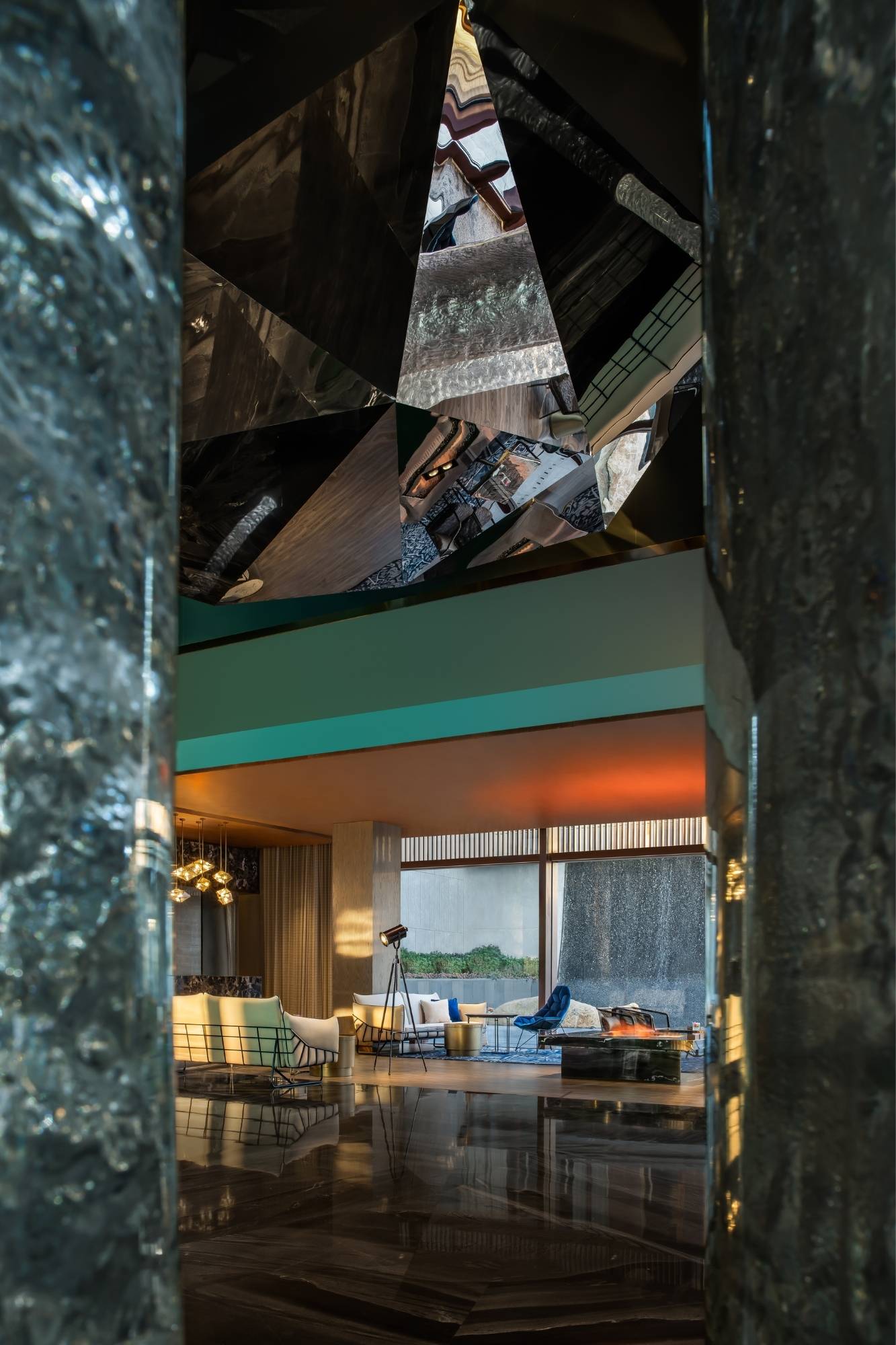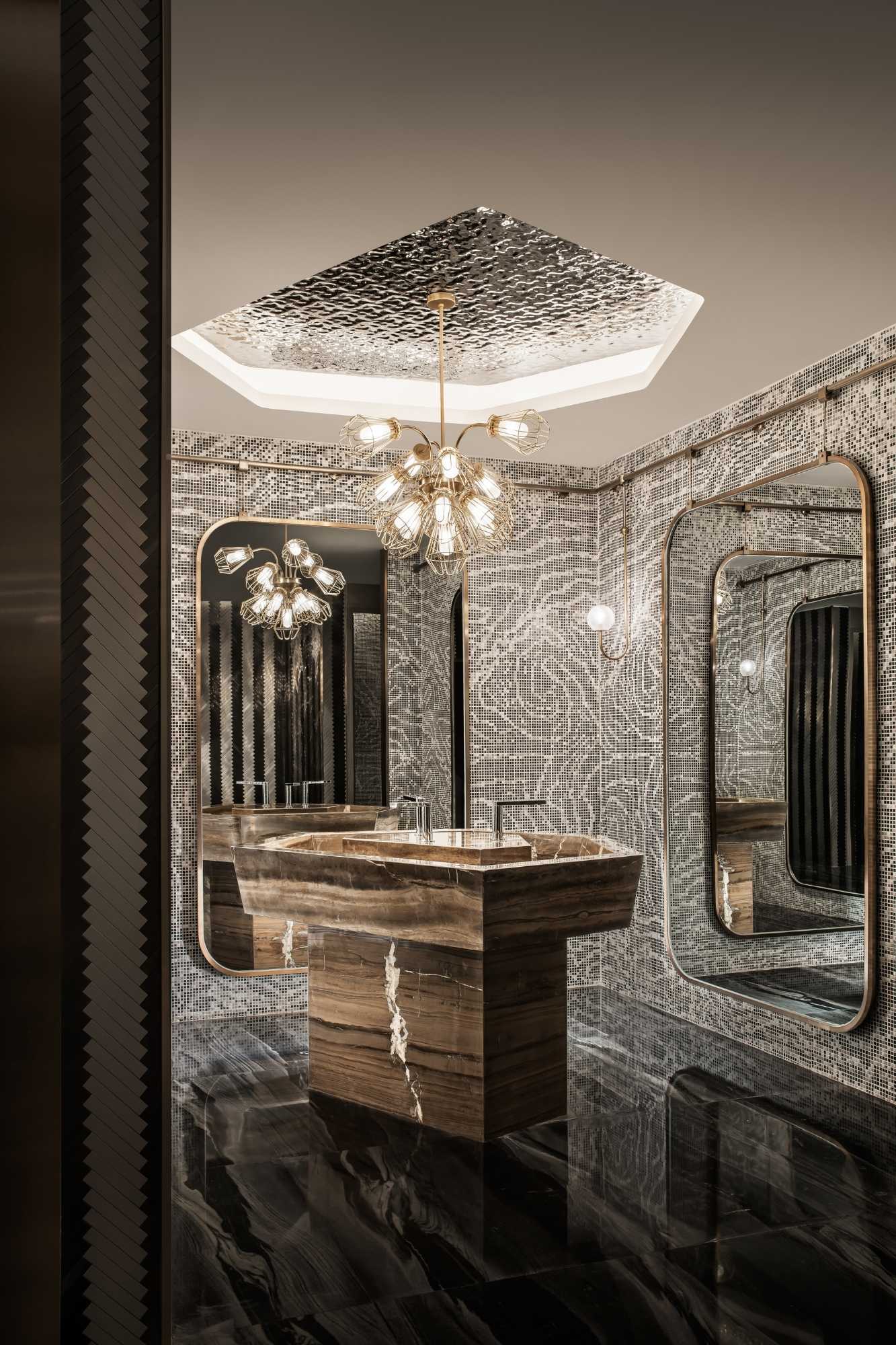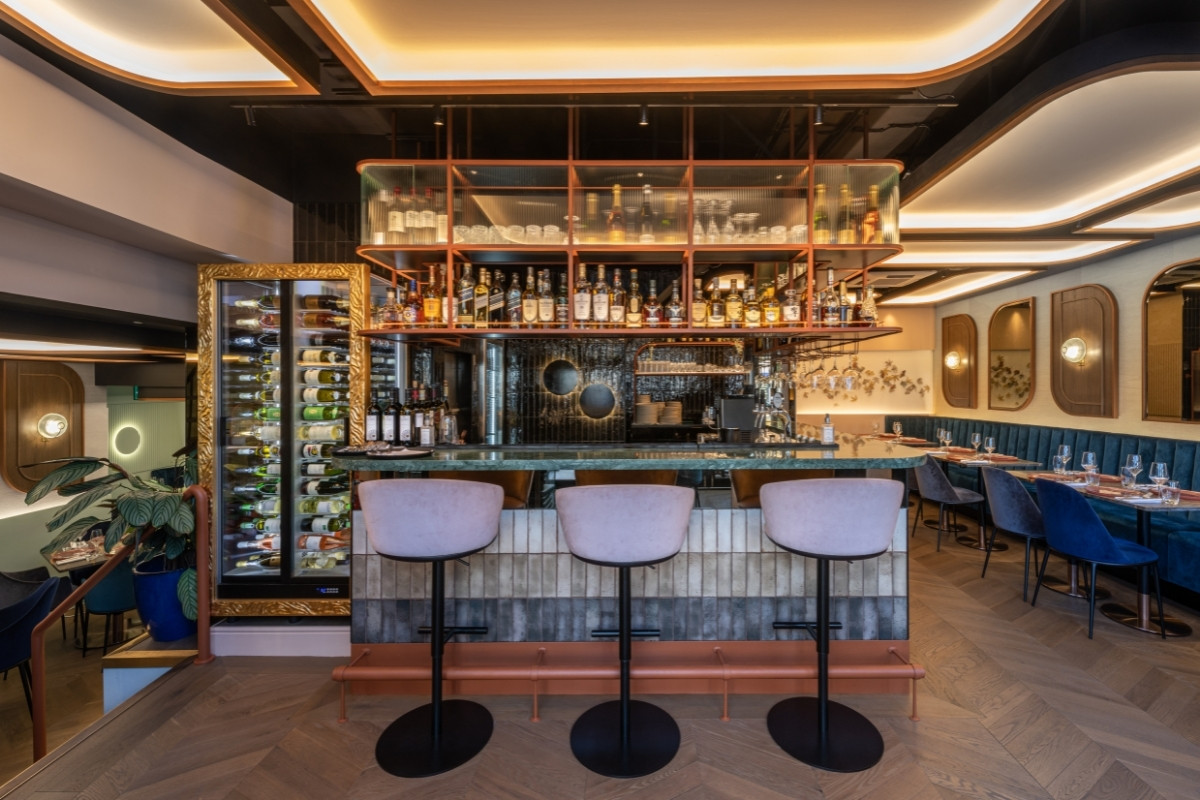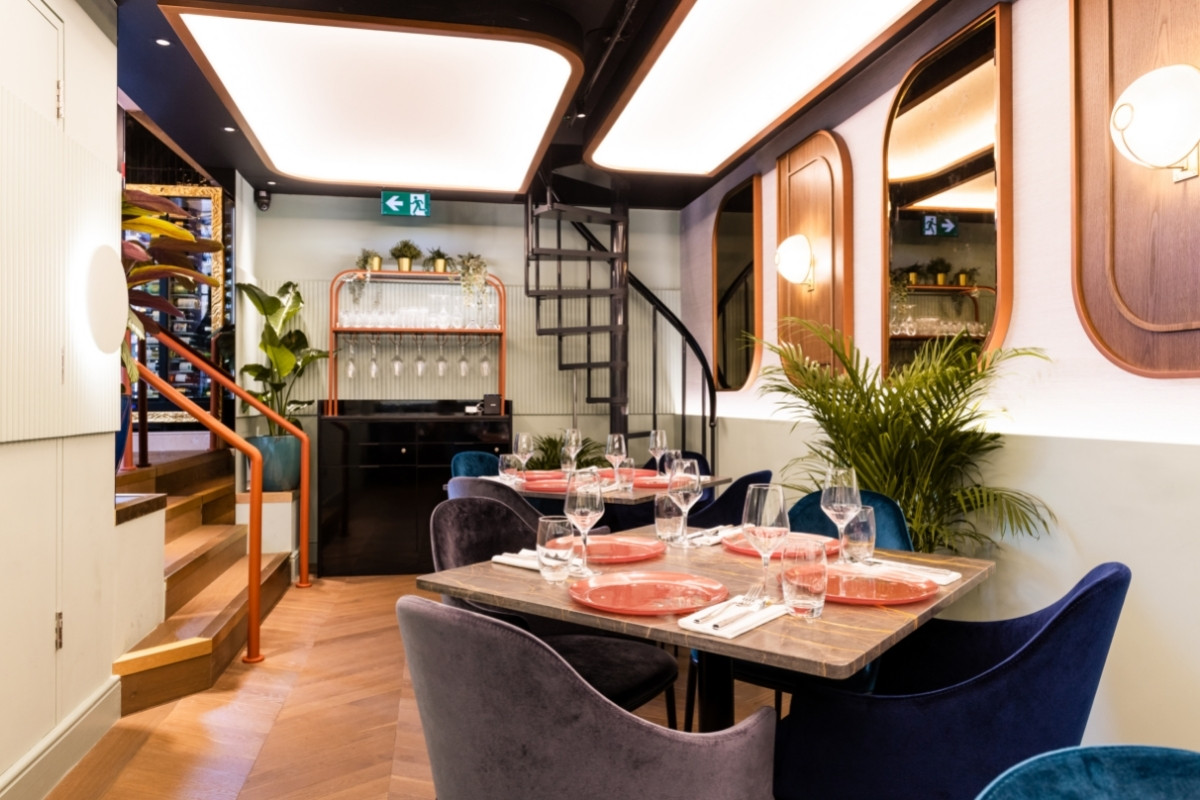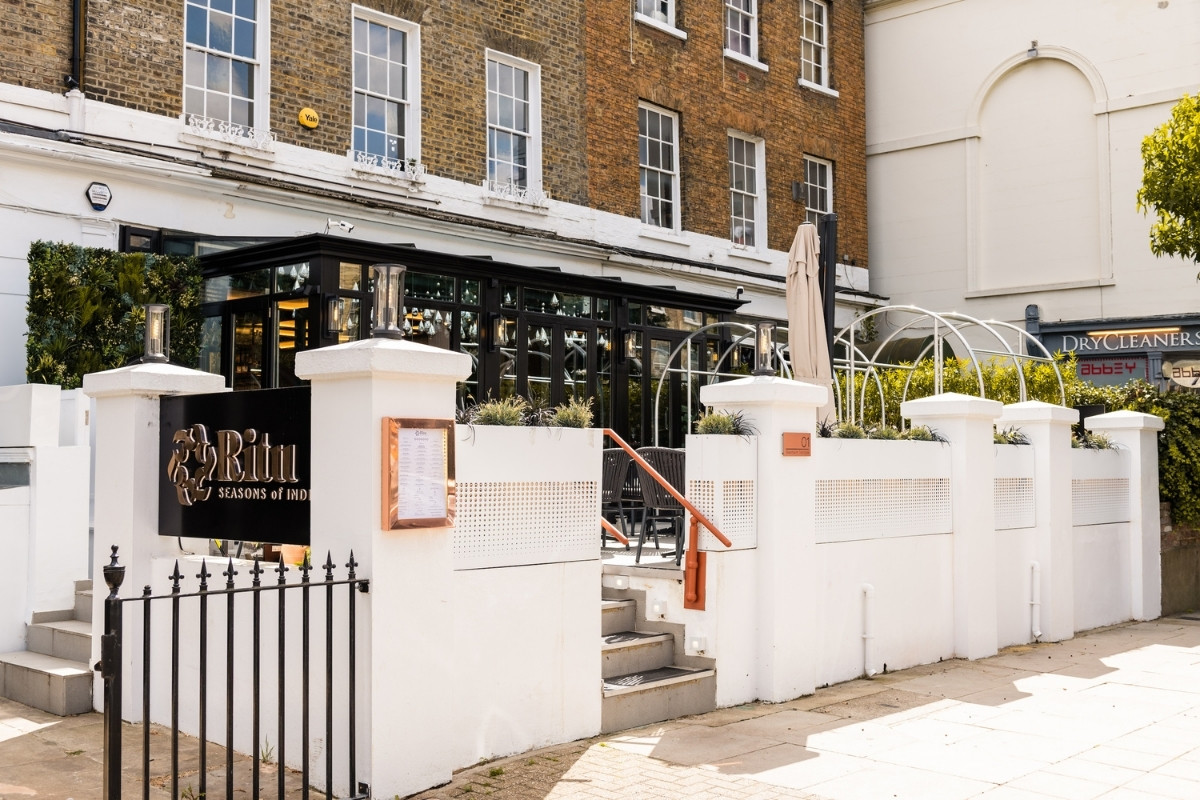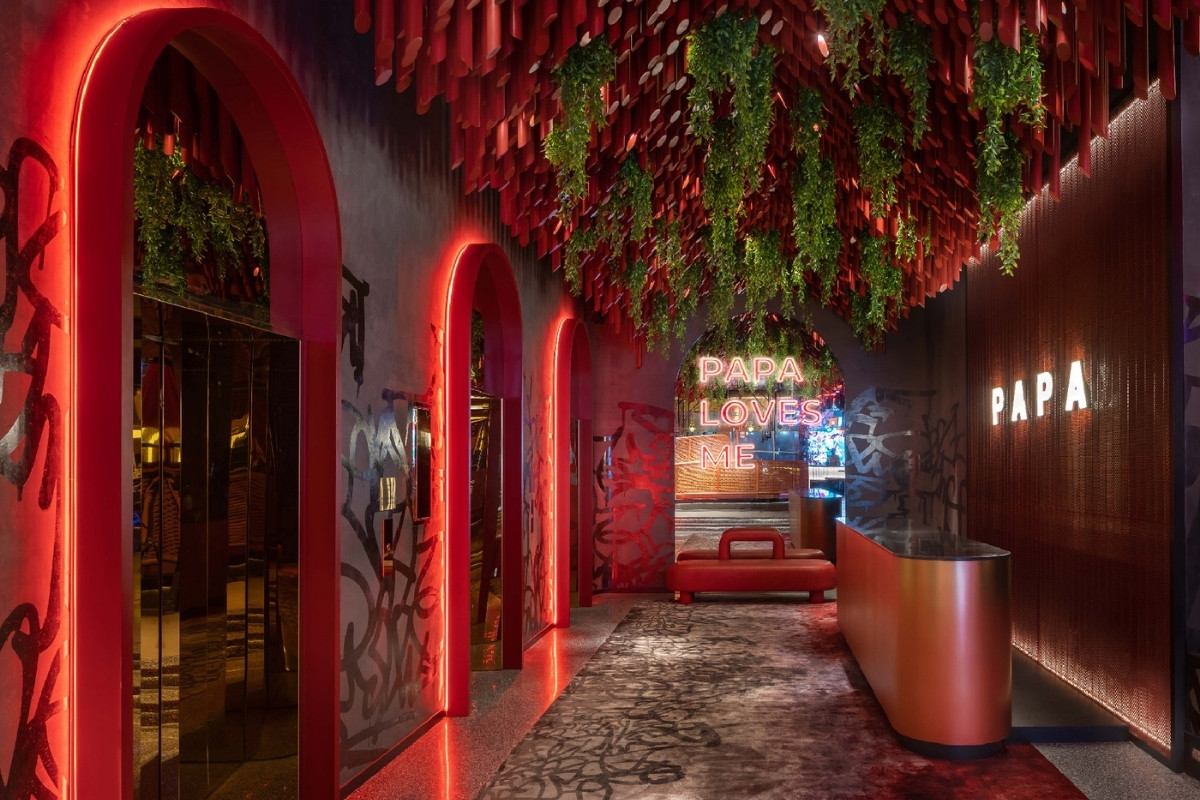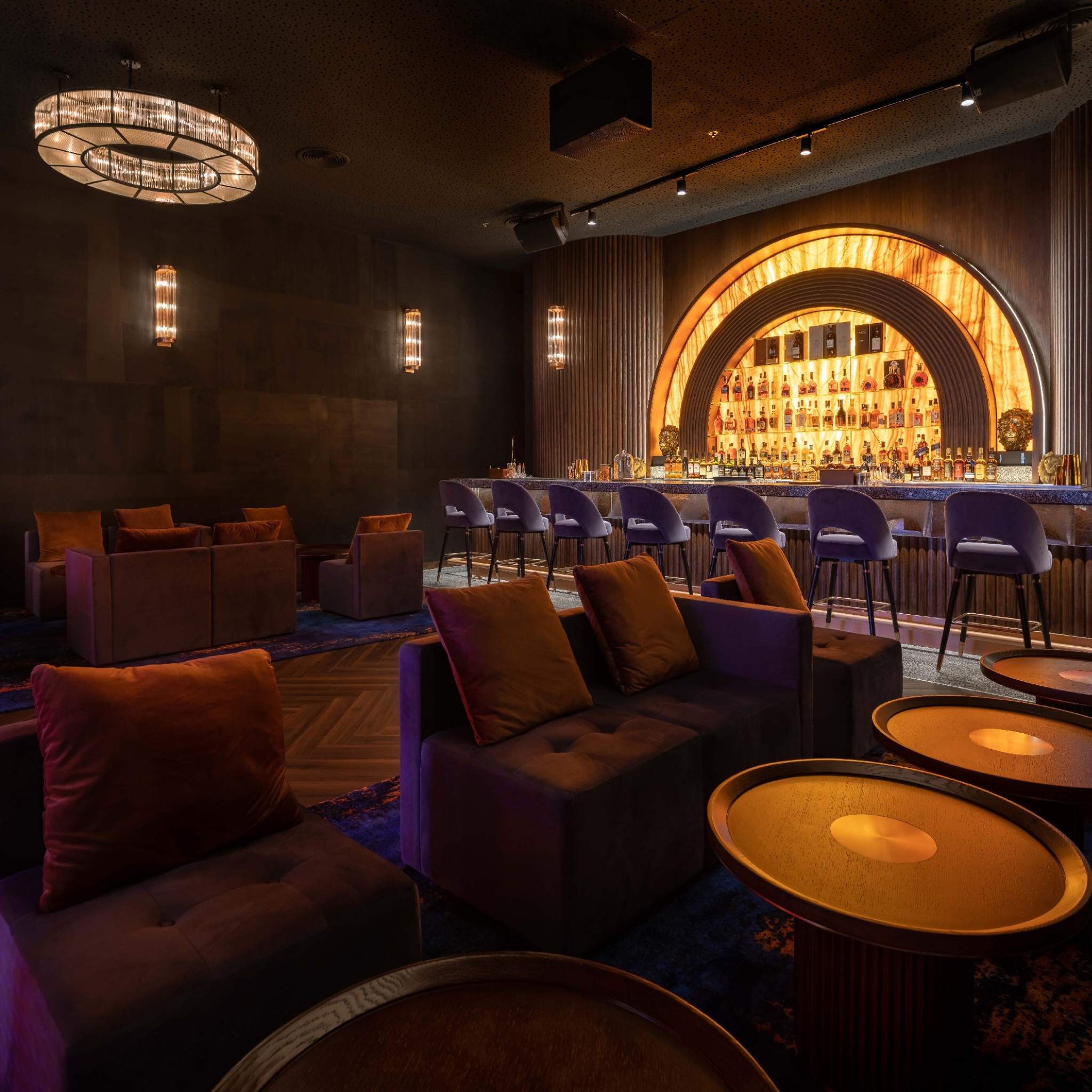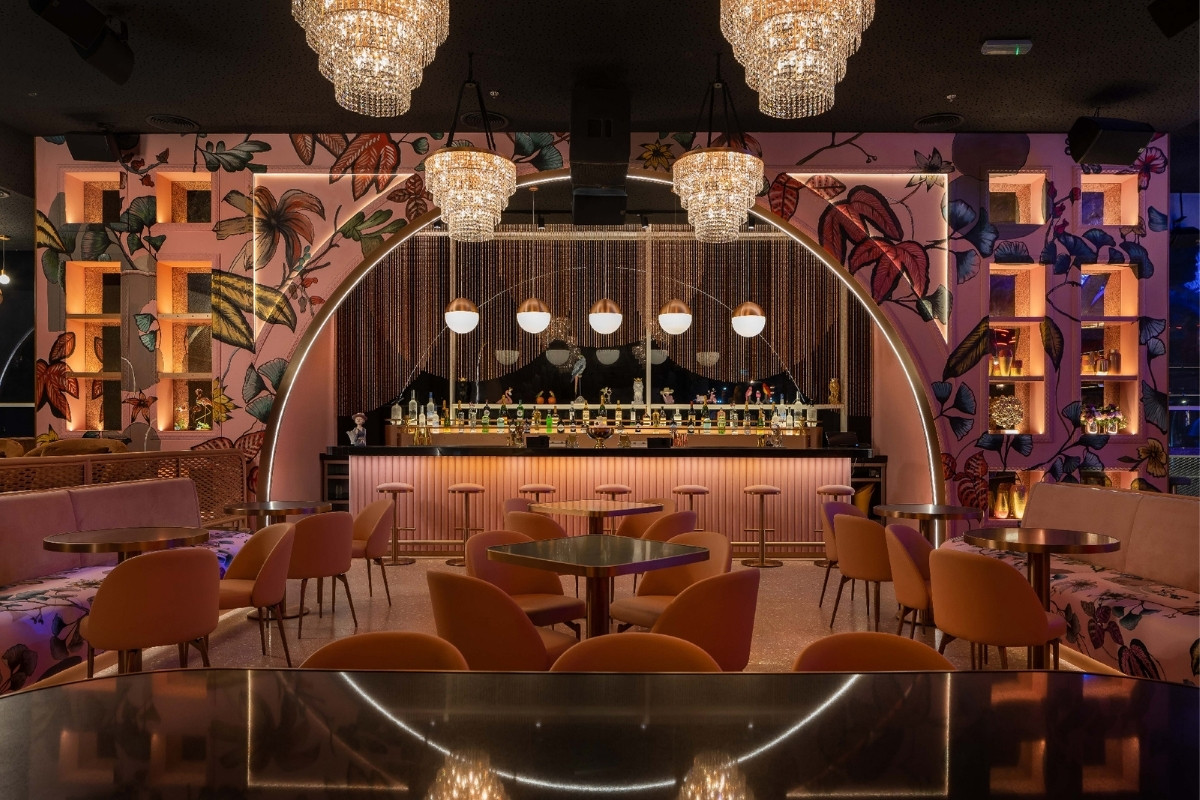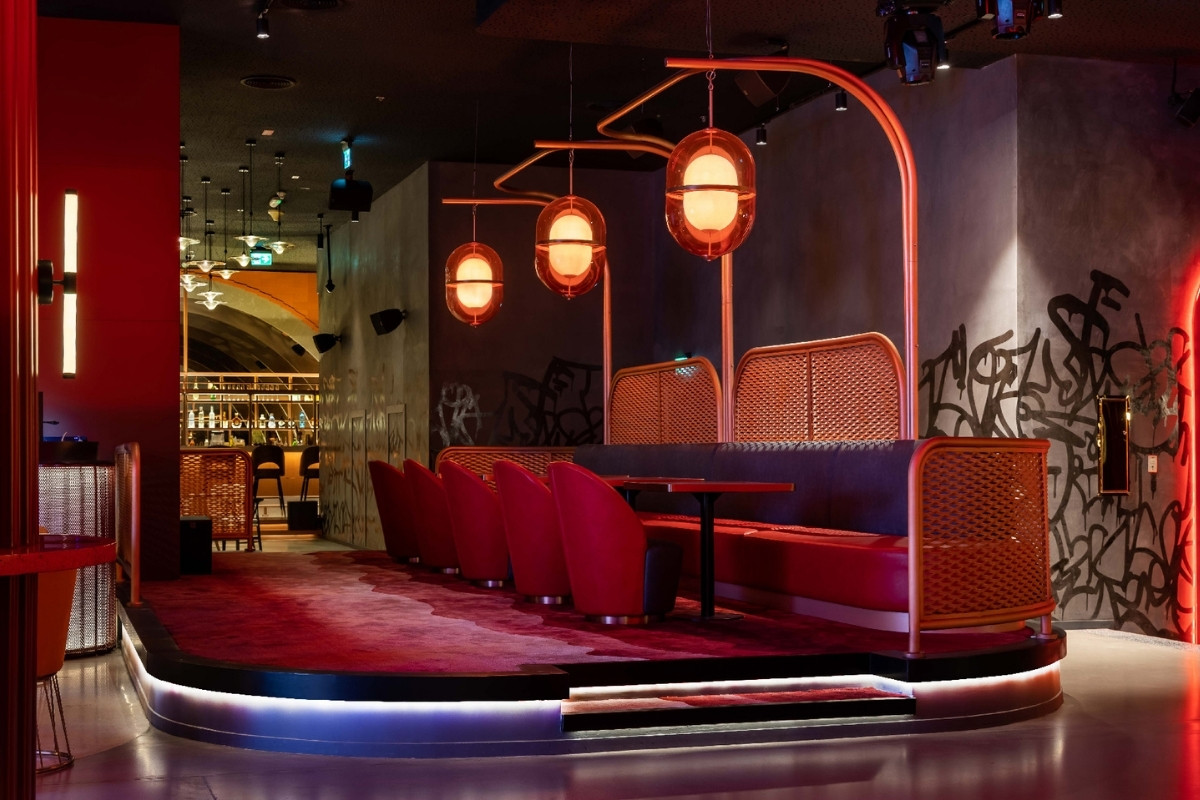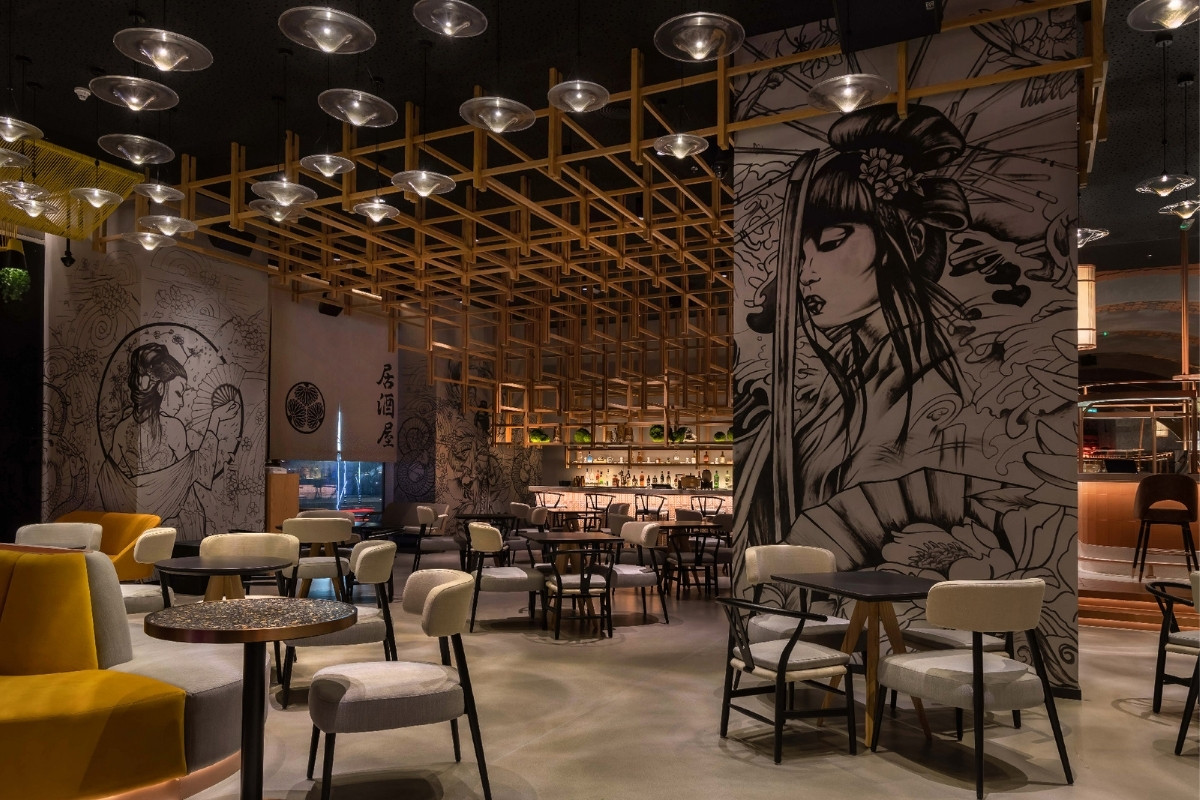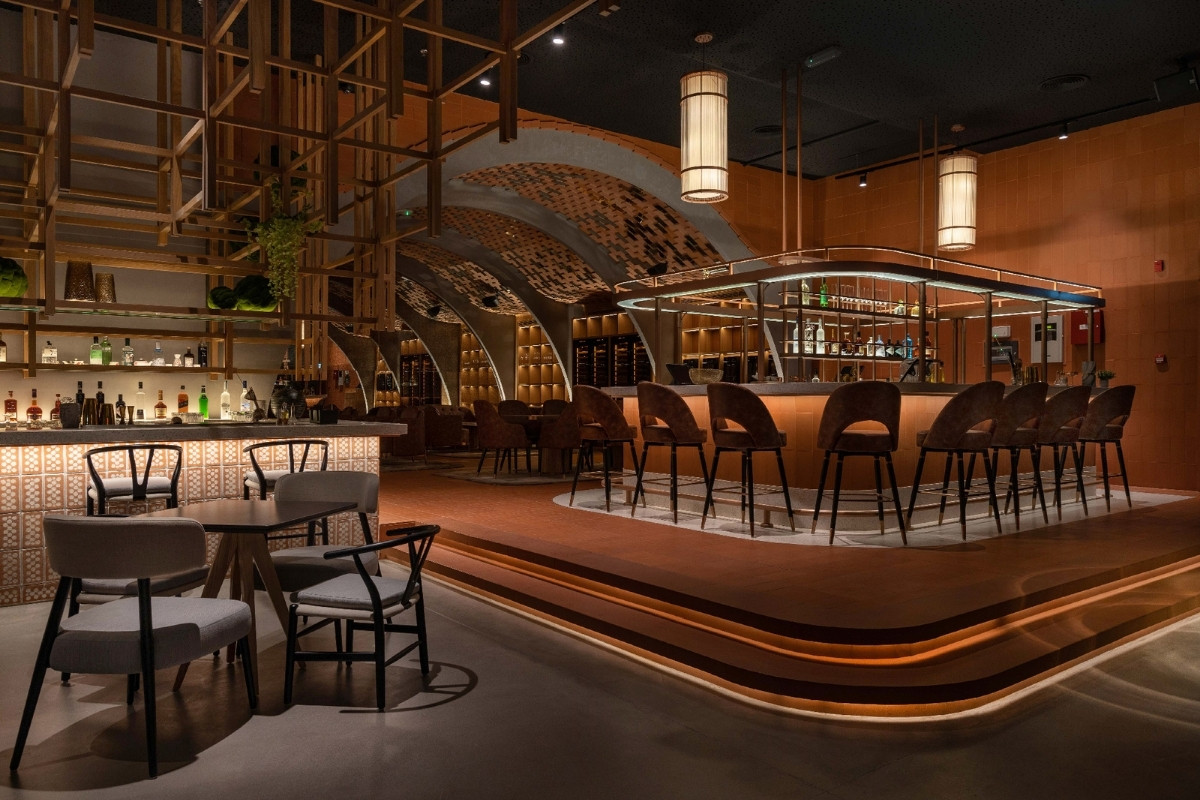This week’s instalment of the Project of the Week series features a luxurious hotel suite design by 2022 SBID Awards Finalist, Jeffrey Beers International.
Uniquely situated in the heart of Midtown Manhattan, Hard Rock Hotel New York offers a backstage pass to the city's historic Music Row, honouring its legacy through intricate design, curated amenities, and award-winning guest experiences. Sitting atop the 36th floor is the jewel of the Rock Star Suite, a glass-enclosed penthouse with expansive city views, original contemporary artwork, bespoke music memorabilia, and one of the largest terraces for entertaining in New York City at 1,600 sq. ft. The sleek interior design includes double height ceilings and rich tones and textures creating an inviting and timeless space. On its first level, the suite features an open-plan living and dining area with a bar and butler pantry, an outdoor bar, VIP direct access to the RT60 rooftop bar & lounge, and more. Guests can retreat upstairs to a luxurious bedroom area with a walk in closet and contemporary bathroom featuring a red free standing bathtub.


